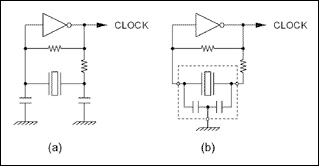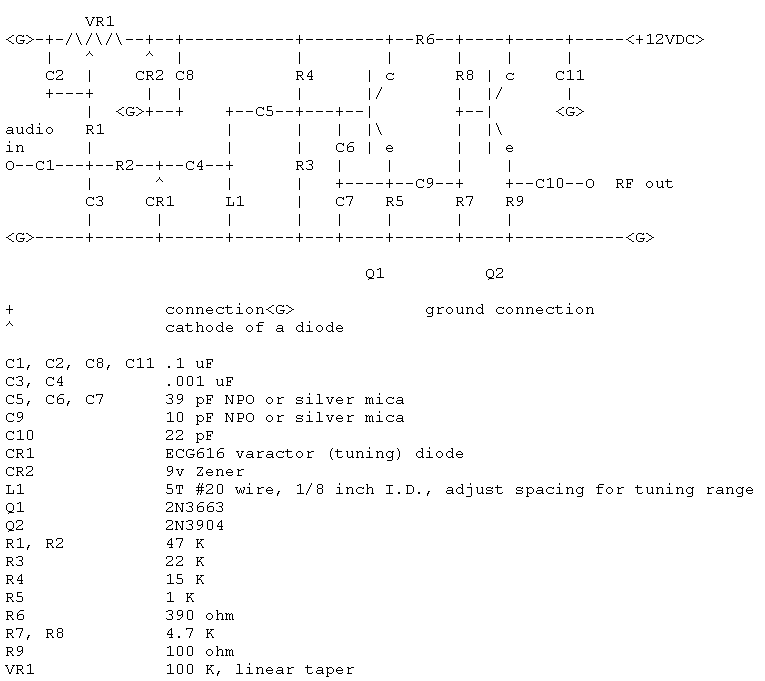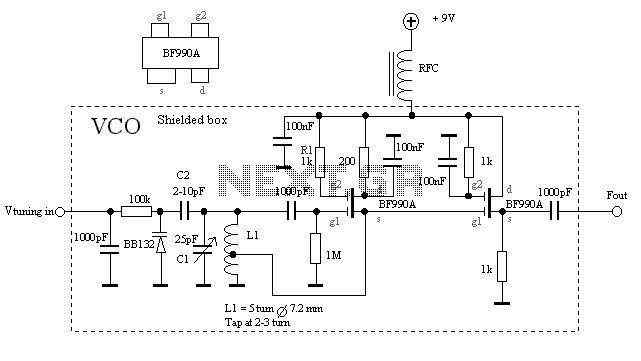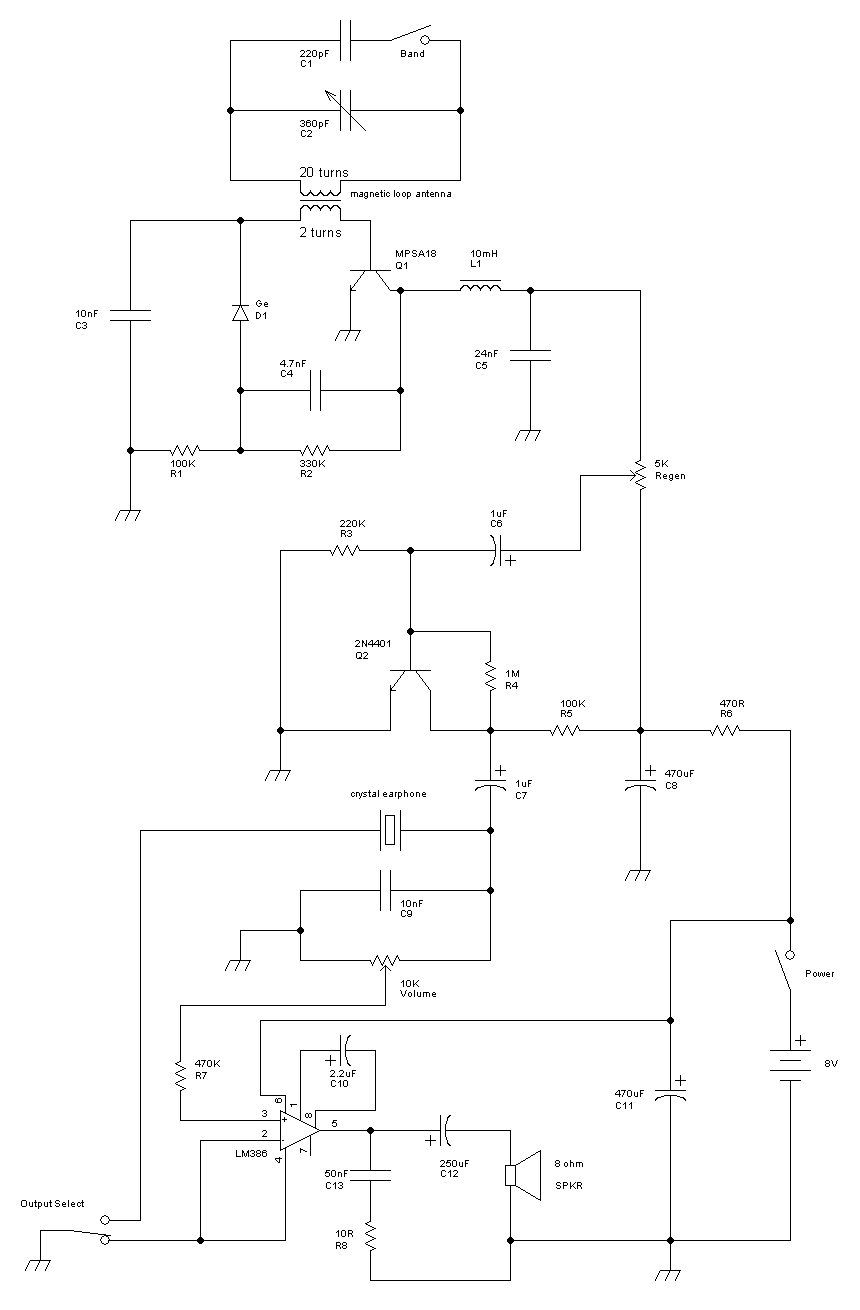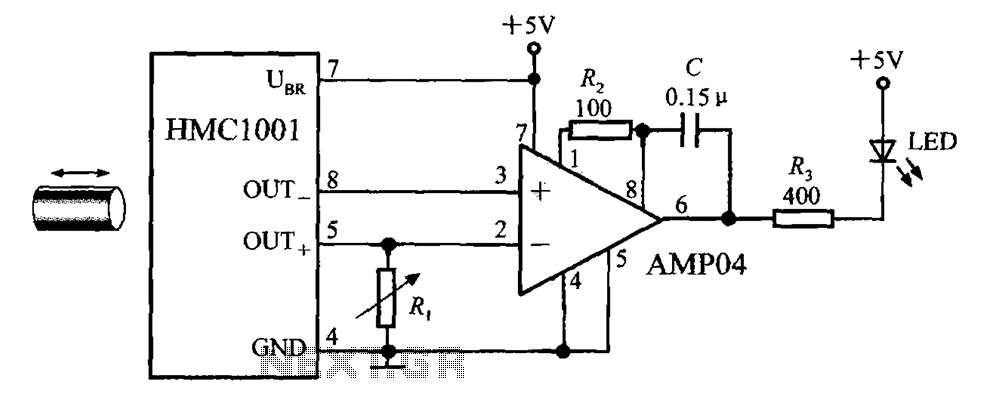
TTL integrated circuits made of a crystal oscillator
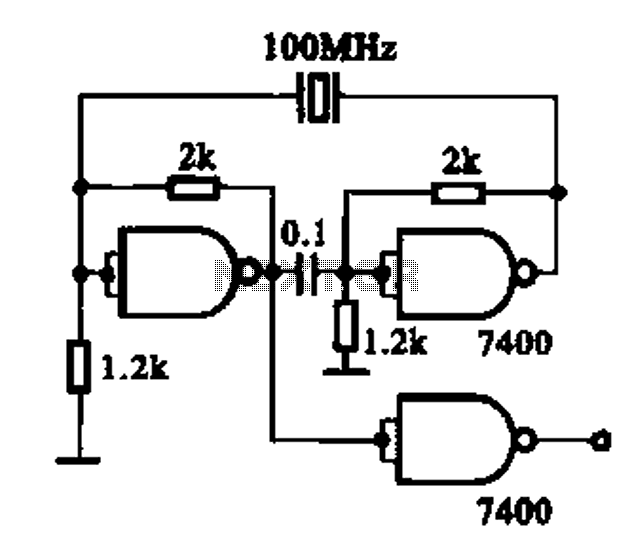
Crystal oscillator integrated circuits, specifically two diagrams of oscillator circuits with oscillation frequencies of 10 MHz and 20 MHz.
Crystal oscillators are essential components in various electronic applications, providing stable frequency references for timing and synchronization purposes. The circuits presented include two distinct configurations for crystal oscillators operating at frequencies of 10 MHz and 20 MHz, respectively.
The 10 MHz crystal oscillator circuit typically employs a fundamental mode crystal, which is connected in a feedback arrangement with an amplifier to maintain oscillation. The circuit may utilize a transistor or an operational amplifier as the active device. The crystal is connected in parallel with the feedback network, which can consist of resistors and capacitors that determine the oscillation frequency and stability. The output signal can be taken from the collector or emitter of the transistor, or from the output of the operational amplifier.
In contrast, the 20 MHz oscillator circuit may require a different approach to achieve the higher frequency. This circuit might utilize a similar feedback mechanism but could incorporate additional components such as a frequency multiplier or a more complex feedback network to ensure the oscillation frequency is accurately maintained. The choice of components, including the type of crystal, is crucial for achieving the desired frequency stability and low phase noise.
Both circuits share common characteristics, such as the need for proper power supply decoupling and grounding techniques to minimize noise and ensure reliable operation. Additionally, the layout of the circuit on a printed circuit board (PCB) should be designed to reduce parasitic capacitances and inductances that could affect the oscillator's performance.
These crystal oscillator circuits are widely used in applications ranging from clock generation in microcontrollers to frequency references in communication systems, highlighting their importance in modern electronics.Crystal oscillator integrated circuits, namely two 10 MHz and 20 MHz oscillation frequency diagram of the oscillator circuit.
Crystal oscillators are essential components in various electronic applications, providing stable frequency references for timing and synchronization purposes. The circuits presented include two distinct configurations for crystal oscillators operating at frequencies of 10 MHz and 20 MHz, respectively.
The 10 MHz crystal oscillator circuit typically employs a fundamental mode crystal, which is connected in a feedback arrangement with an amplifier to maintain oscillation. The circuit may utilize a transistor or an operational amplifier as the active device. The crystal is connected in parallel with the feedback network, which can consist of resistors and capacitors that determine the oscillation frequency and stability. The output signal can be taken from the collector or emitter of the transistor, or from the output of the operational amplifier.
In contrast, the 20 MHz oscillator circuit may require a different approach to achieve the higher frequency. This circuit might utilize a similar feedback mechanism but could incorporate additional components such as a frequency multiplier or a more complex feedback network to ensure the oscillation frequency is accurately maintained. The choice of components, including the type of crystal, is crucial for achieving the desired frequency stability and low phase noise.
Both circuits share common characteristics, such as the need for proper power supply decoupling and grounding techniques to minimize noise and ensure reliable operation. Additionally, the layout of the circuit on a printed circuit board (PCB) should be designed to reduce parasitic capacitances and inductances that could affect the oscillator's performance.
These crystal oscillator circuits are widely used in applications ranging from clock generation in microcontrollers to frequency references in communication systems, highlighting their importance in modern electronics.Crystal oscillator integrated circuits, namely two 10 MHz and 20 MHz oscillation frequency diagram of the oscillator circuit.

